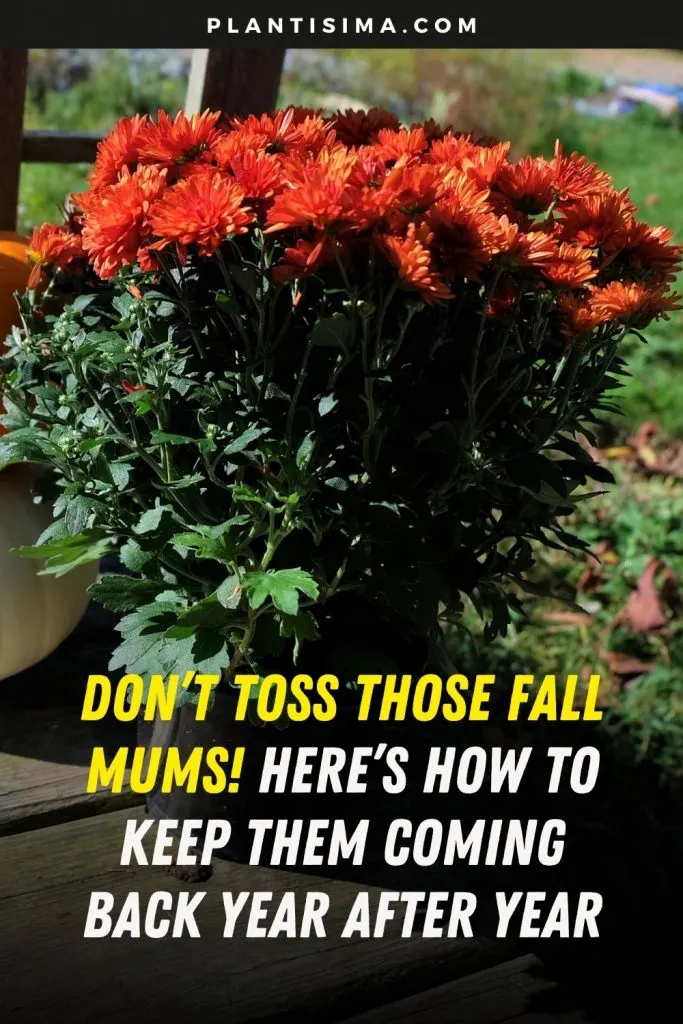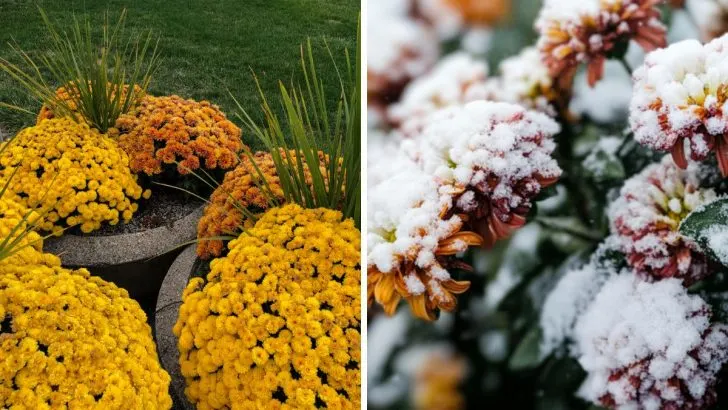Mums, or chrysanthemums, are the quintessential symbol of fall. Their vibrant hues, ranging from bold oranges and yellows to deep purples and reds – signal the shift from summer blooms to autumn’s golden palette.
Walk down any street in the fall, and you’ll likely spot pots of mums gracing doorsteps and gardens, bringing a burst of life to the fading summer landscape.
But here’s the thing: most people treat mums like disposable décor, tossing them out when the frost hits. Little do they know, mums are perennials, capable of coming back year after year if you give them a little care.
Instead of tossing those beautiful blooms, why not invest a bit of time in making them a long-term staple in your garden?
Ready to learn how to keep your mums thriving season after season?
Let’s dive into everything you need to know to make those autumn beauties last.
Why Mums Deserve a Second Chance
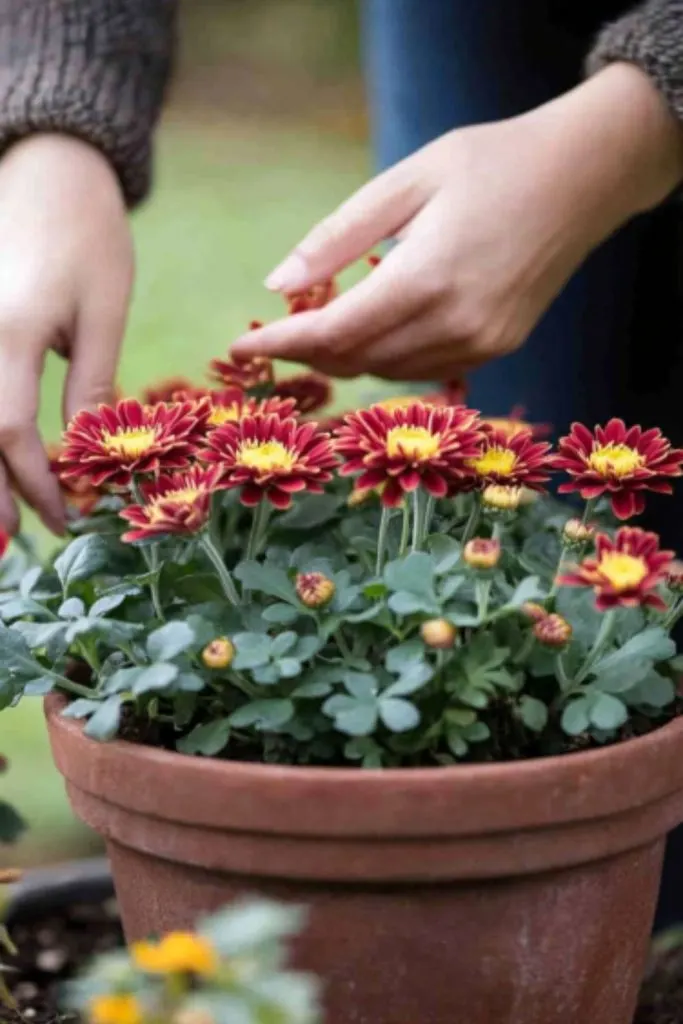
Mums are natural perennials, meaning they can thrive for years if you give them the right care. Most people throw them away because they don’t realize how easy it is to make them last.
And who wouldn’t want to see that pop of autumn color return year after year?
The Secret to Longevity: It’s All in the Type
Not all mums are created equal. If you want mums that last, go for garden mums, not the delicate florist mums that are bred for indoor beauty but outdoor fragility.
Garden mums are the real deal – tough enough to survive colder weather with the proper care. When shopping, look for mums with strong, green foliage and skip any that look tired or diseased.
Planting Mums: Timing Is Everything
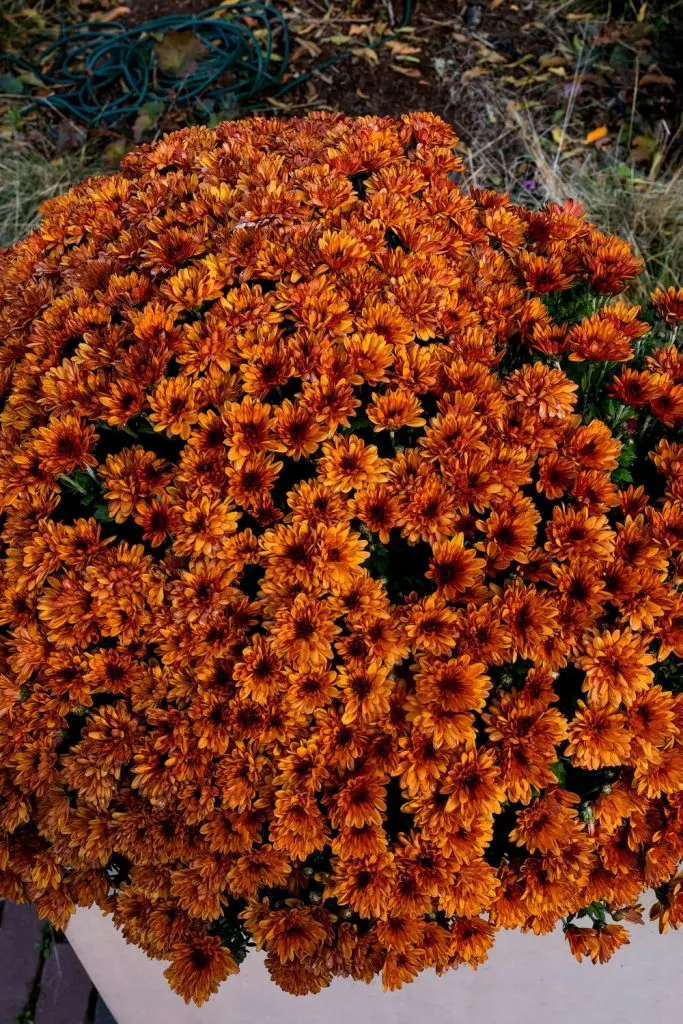
Planting mums in spring? You’re ahead of the game! This gives the roots plenty of time to settle in and get cozy before winter.
But if you’re like most of us and wait until fall to grab those mums, no worries. Just plant them as soon as possible so they can establish themselves before the frost comes knocking.
Pick a sunny spot with well-draining soil. Think of it like finding the perfect piece of real estate – location, location, location!
The roots need space and sunlight, but too much water will make them rot faster than you can say “fall garden.”
Watering Mums: More Isn’t Always Better

Mums like their water like most of us like our coffee – just the right amount. Keep the soil consistently moist, but don’t drown them.
Too much water is a surefire way to invite root rot to the party. A layer of mulch around the base will help retain moisture and keep things balanced, like a cozy blanket for your mums.
Fertilizing: Give Them the Right Fuel
Fertilizer can work wonders, but timing is everything. Hit them with a balanced, slow-release fertilizer in the spring and again in mid-summer. Come fall, stop feeding them – it’s time to let the plant focus on survival, not new growth. Think of it as letting them wind down before winter slumber.
Pruning: The Key to Fuller, Happier Mums
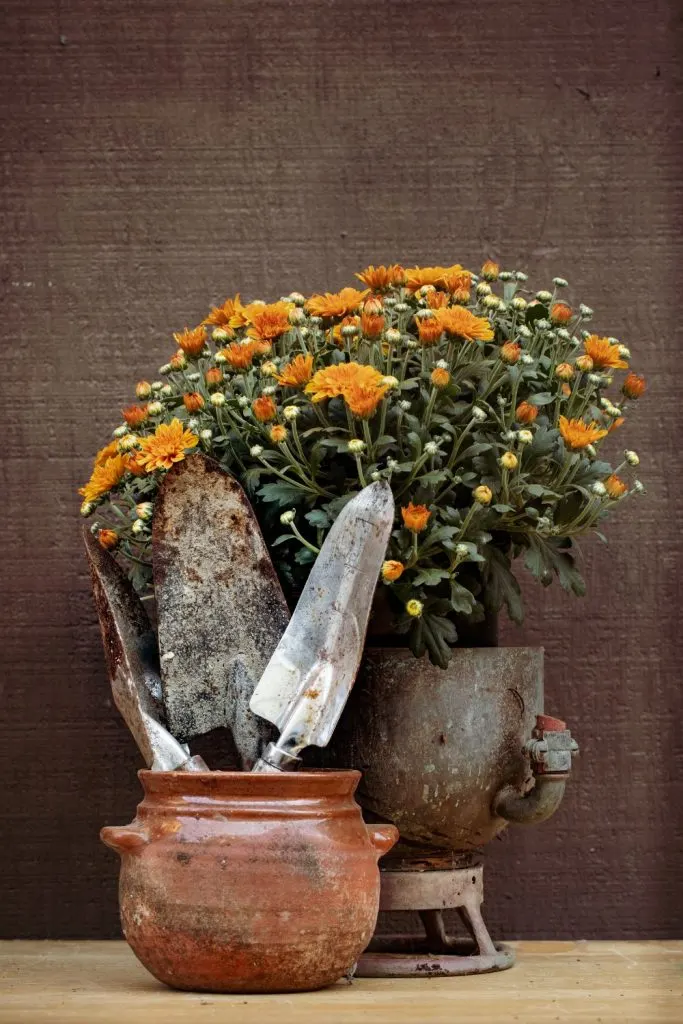
Here’s where people often go wrong – pruning! Pinch back stems in early summer when they hit about six inches tall. This encourages a fuller, bushier plant that’s ready to bloom its heart out.
Stop pruning by mid-July so buds can form in time for fall. And don’t forget to deadhead (a fancy way of saying “remove dead flowers”).
It helps the plant focus on new growth instead of wasting energy on old blooms.
Keeping Pests at Bay
Mums may look tough, but they still have enemies – pests like aphids and diseases like powdery mildew can ruin your plants.
Keep a close eye on them and act fast at the first sign of trouble. Use neem oil or insecticidal soap for pests, and make sure your mums have plenty of airflow to prevent fungal issues.
Overhead watering is another no-go. It can turn your mums into a breeding ground for disease.
Overwintering: Getting Your Mums Ready for Cold Weather
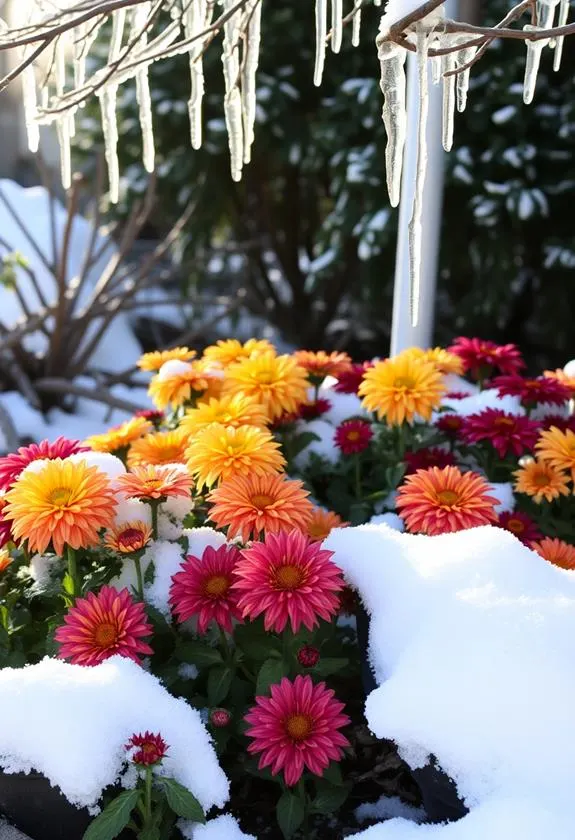
As winter looms, let your mums shift into dormancy. Start by cutting back on fertilizer in late summer and gradually reduce watering as temperatures drop.
Mulch is your best friend here – pile it on thick to keep roots cozy and protected. Some gardeners even go the extra mile by digging up their mums and storing them in a cool, dark place until spring.
If that sounds like too much work, don’t worry. As long as you mulch well and give them a sheltered spot, your mums should pull through just fine.
Want More Mums? Learn to Propagate
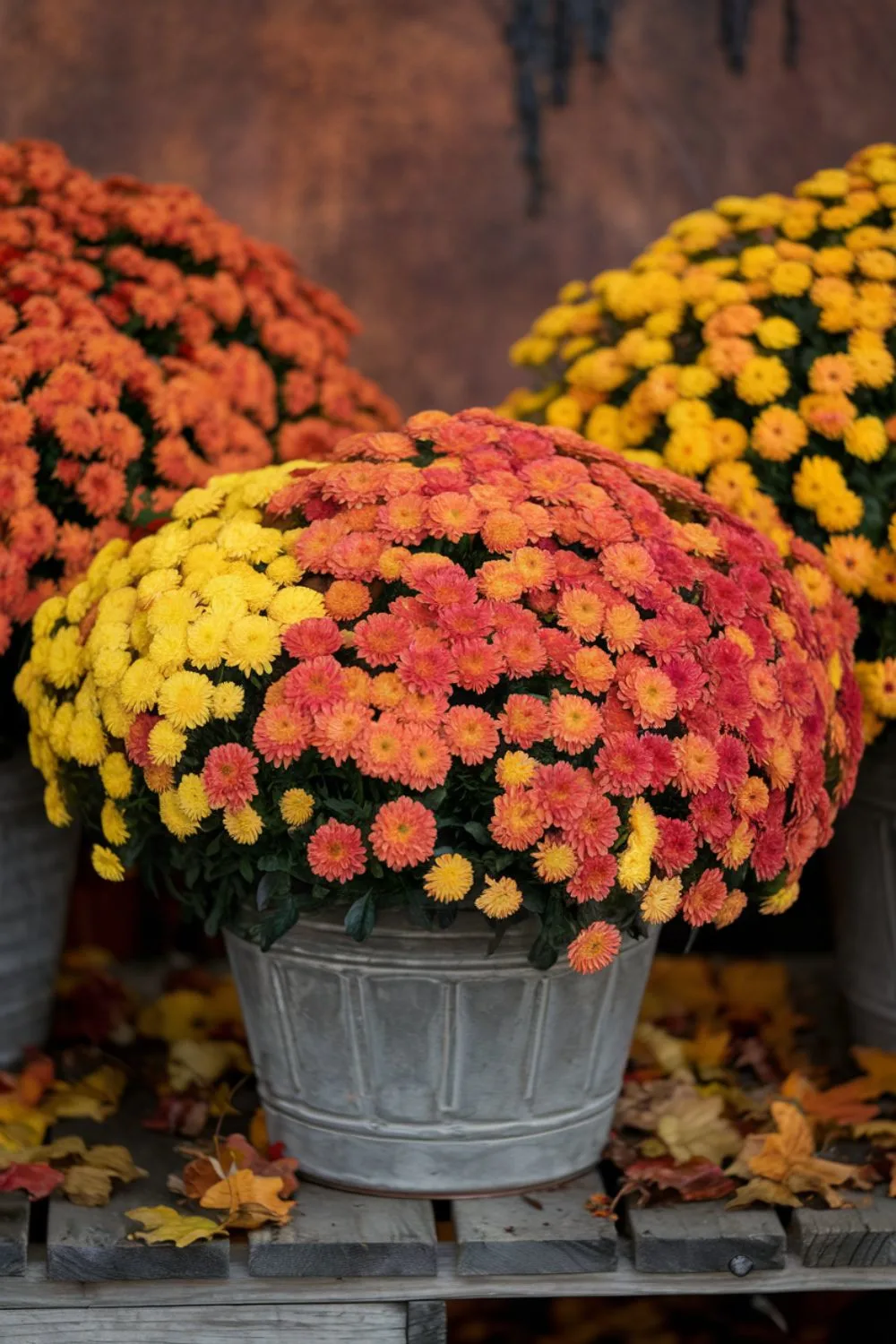
Here’s a fun way to get more mums without spending a dime – propagate them! In spring, dig up your established mums and divide the root clumps.
Replant the sections, and voilà – you’ve got more mums. Alternatively, take cuttings in summer and root them in well-draining soil. It’s like making more of your favorite garden feature without leaving the house.
Common Pitfalls (and How to Avoid Them)
Planting mums too late in the fall is one of the biggest mistakes. If the roots don’t have enough time to establish, they won’t survive the winter. And beware of overwatering!
Too much moisture leads to root rot, while too little can stress the plant. Also, avoid high-nitrogen fertilizers in late summer – they encourage new growth that’s vulnerable to frost.
Turn Your Fall Mums Into a Perennial Garden Star
There you have it – fall mums don’t have to be a one-season wonder. With the right care, these hardy plants can become a recurring feature in your garden, delivering bursts of color year after year.
Follow these tips, and you’ll be enjoying those vibrant blooms for many autumns to come. So, next time you’re tempted to toss those mums, think again!
They’re just waiting for their comeback.
